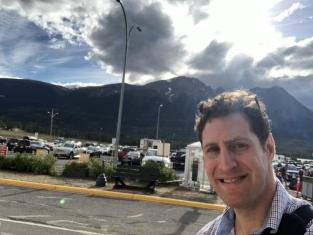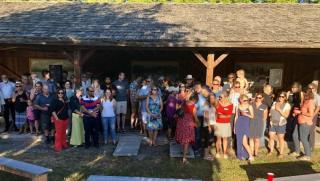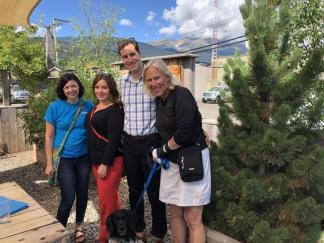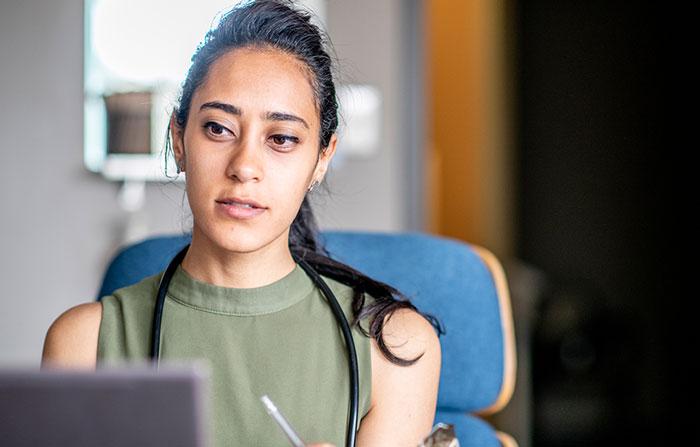- Managing your Practice
-
- Your Benefits
-

Introducing the ultimate Club MD experience
From work to play, and everything in between, we provide you with access to hundreds of deals from recognizable, best-in-class brands, elevating every facet of your life – from practice supports to entertainment, restaurants, electronics, travel, health and wellness, and more. Your Club MD membership ensures that these deals are exclusive to you, eliminating the need to search or negotiate.
Welcome to the ultimate Club MD experience. Your membership, your choices, your journey.
-
- Advocacy & Policy
-
- Collaboration
- News & Events
-

Stay Informed
Stay up to date with important information that impacts the profession and your practice. Doctors of BC provides a range of newsletters that target areas of interest to you.
Subscribe to the President's Letter
Subscribe to Newsletters
-
- About Us
-

Doctors on Fire: Notes from the Pacific Northwest
August 14, 2018
President's Blog
Immense plumes of smoke billowed up to the airplane like fluffy charcoal castles above the clouds, ember-orange moats below. It takes a lot to draw the attention of regular travelers on the Vancouver-Smithers flight, but this year’s forest fires did just that.
There were 475 active fires when I arrived; four days later there were 600.
 Such is life in the Pacific Northwest (PNW) these days. As if caring for patients wasn’t enough, there are many uncertainties. Will fires take out the main telecommunications? How many communities need to be evacuated? Will people be able to get where they need to be? Even ordinary tasks are in flux. It wasn’t until the morning of my arrival that Holly Pastoral, Doctors of BC’s Regional Advisor and Advocate for the North, was certain that the westward roads into the PNW would be open and safe.
Such is life in the Pacific Northwest (PNW) these days. As if caring for patients wasn’t enough, there are many uncertainties. Will fires take out the main telecommunications? How many communities need to be evacuated? Will people be able to get where they need to be? Even ordinary tasks are in flux. It wasn’t until the morning of my arrival that Holly Pastoral, Doctors of BC’s Regional Advisor and Advocate for the North, was certain that the westward roads into the PNW would be open and safe.
Different barriers are present as well. The catchment areas for Prince Rupert, Terrace, and Smithers cover great distances with many communities connected to these hubs only by air or water. Along with geographic diversity comes cultural diversity, relationships darkened by the shadows of colonialism, faded but not forgotten, rendering trauma-informed care. Like the weather, recruitment, retention, and succession planning are ongoing topics of discussion. Funding has been based on community census rather than community need; this inequity has affected the healthcare professionals needed for team-based care who are often found in short supply, if at all.

But in the face of these obstacles is a greater fire: the passion burning inside the doctors who sacrifice so much for the communities they care for. I learned that it is common for surgeons to work in the OR in Kitimat and then travel to Terrace for office consultations. Or for the obstetrician in Prince Rupert to head eastward to share call in Smithers. Or for the doctors in Houston and Hazelton and other areas to move about when needed to cover emergency rooms, hospital floors, and obstetrical suites. The doctors of the PNW are highly skilled, enhancing their practices to include cesarean sections, endoscopy, mental health, and other services their communities need.
So, although my time was short and we did not put out all the fires, we are circling around the major sites and planning together for the future. I am thankful for the hospitality and kindness shown to me by the physicians and staff. And as I board the bus that will take me to the ferry so I can catch the plane out of Prince Rupert airport, I have my own warmth – a deeper admiration for our colleagues in the PNW and the amazing work they do. I hope that their enthusiasm and dedication will continue to blaze brightly.

PS: I would like to thank the doctors and administrators that took to time to meet with me. I am also grateful to Jessica Cavers, Holly Pastoral, Colleen Enns, Nancy Smith, Michele Pele, Sarah Panofsky and the TPIGS team for their help in organizing our visits.
- Dr Eric Cadesky




